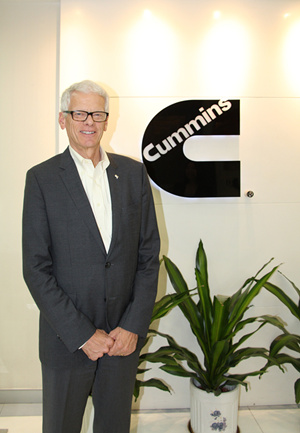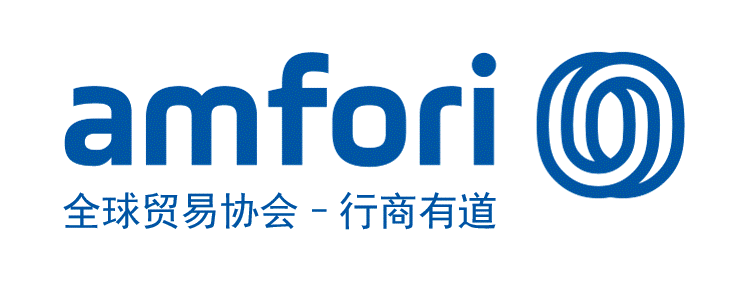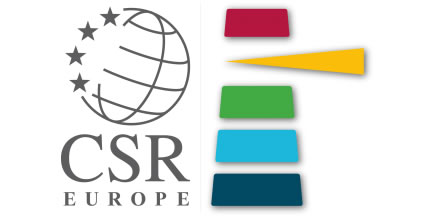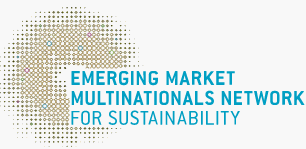Cummins: Benefiting from both altruism and self-interest
2015-07-21未知admin0010

Interviewee: Mark Levett, Vice President -Community Relations and Corporate Responsibility CMI.
About Mark Levett
Mark Levett is the Vice President in charge of Community Relations and Corporate Responsibility at Cummins Inc. and the Chief Officer of the Cummins Foundation. He oversees the Corporate Responsibility function and manages resources to improve the communities in which Cummins operates. Beginning his career at Cummins in 1973, Levett has held many roles in the Company’s finance, engineering, service, OEM sales and product management functions. He went on to hold several key leadership positions including General Manager - South Pacific, Vice President – Industrial Business, Vice President – North American Field & Distribution, Vice President – Worldwide Industrial Business, Vice President – Asia-Pacific, Vice President – International and most recently, Vice President and General Manager – High Horsepower Engine Business. Levett holds a Bachelor of Arts from Hanover College and an MBA from Michigan State University.
At 10 a.m. on June 9, Mark Levett did not appear at Cummins Beijing office as he had a tight schedule. That morning, he visited BaiNian Vocational School in the morning and had a plan to visit the Yanjing Cygnet public primary school in the afternoon. The interview was arranged before his lunch break.
The amiable Mr. Levett began the conversation by introducing Cummins’ insistence on the partnership model of 50-50 joint venture. Indeed, “Partnering with our customers to make sure that they succeed” is Cummins’ goal for altruism and its survival skill for self-interest. As the largest independent diesel engine manufacturer with sales worth over $3.869 billion in China in 2014, Cummins makes impressive performance and holds “Demanding that everything we do leads to a cleaner, healthier, safer environment” as part of its mission. Mr. Levett said that, to improve the air quality in Beijing, on June 6, Cummins, Beijing Environmental Protection Bureau and Beijing Public Transit (BJPT) jointly initiated a software retrofit of BJPT buses powered by Cummins engines to reduce NOx emission.
Since Cummins’ entrance to China market in 1975, it has formed many joint ventures and thus have seen significant revenue growth. Besides business success, Cummins has also upheld corporate responsibility. For the mutual benefit of partnership with customers, promotion of “greener” engines, and for volunteer community service, Cummins has made use of and benefitted from their altruism. How does Cummins achieve the harmony of business, community, and environment? What contributes to the sustainable development of Cummins for nearly a century? What are the CSR practices in China? This interview will invite Mr. Mark Levett to talk about the corporate social responsibility in Cummins.
Healthy Community Breeds Healthy Companies
China WTO Tribune: With nearly a century’s history, how did Cummins combine business with CSR concept? How was CSR concept originated in Cummins?
Mark Levett: It really started with our man that served as the president and chairman of the company from the1930s and he stepped down as CEO in 1979. His name is J. Irwin Miller. He proposed the CSR concept in Cummins, and eventually set up corporate responsibility as a department in 1972. In early 1950s, Mr. Miller introduced the concept that healthy community breeds healthy companies. Cummins tries to achieve a balance for all the stakeholders, including shareholders, employees, the communities, suppliers, regulators and environment in every corporate decision. In the following 60-year development, Cummins has always kept and practiced this concept. Corporate responsibility has been one of our six core values. In Cummins, we say, corporate responsibility is just as important as our product, building, and financial results and it is an integrated part of our daily work.
China WTO Tribune: You have been working in Cummins for over 40 years. Did you have any special experience that makes you believe CSR concept is the core value of Cummins?
Mark Levett: In the early 1980s, Cummins was offered to become the only engine supplier in South Africa. We sent a team to Africa and I helped do market analysis. We reviewed the market and it turned out it will be very profitable for us to establish a mini section in South Africa. As the team left the country, the minister of congress met our team, praised our plan, but told us we would have to manage the business by South Africa rules, according to which, we have to use all white managers. At that time, that business was worth 4% of Cummins sales revenue. The team came back and reviewed the plan with our senior manager. Our management took it to the board of directors. They spent five minutes talking, declined to do business under this rule in South Africa and gave up 4% of our business. Because I was involved as a member of the team. It’s a huge impact on me. I said, Cummins is serious about corporate responsibility and integrates it into Cummins’ DNA. In Cummins, corporate responsibility does not merely focus on community development, but is valued in corporate operating decisions.
Mutual Benefits for Communities, Employees and Companies
China WTO Tribune: How does Cummins achieve mutual benefits for communities, employees and company through CR initiatives?
Mark Levett: In the corporate responsibility project design process, we try to apply our employees’ internal skills and business tools to community service and have proved effective to maintain staff enthusiasm, cultivate their abilities, and serve the community better. For example, we develop very good skills on water. We make sure “clean water comes in, clean water leaves” which we have also applied in neighborhoods and villages that might have water problems in China. These programs have helped Chinese communities realize the sustainable development of water resources.
Our goal is to get every employee around the world to volunteer in their community. We encourage every employee to devote 4 hours of their work to the communities. In 2014, 93% of our Chinese employees, about 9000 Cummins employees and joint venture employees, volunteered in their communities. Cummins also organized Cummins Community Involvement Team (CIT) to design and practice corporate responsibility in communities. We take younger people and give them a chance to manage community projects to help them improve their team management ability,project coordination strategy and benefit their career development. This is a kind of mutual benefit that Cummins’ corporate responsibility pursues.
China WTO Tribune: As a global power leader in engine manufacturing industry, what commitment does Cummins make for the environment and sustainable development? How does Cummins fulfill this commitment?
Mark Levett: This is a huge success for Cummins. Our projects and engineers are promoting this aspect. As a leading company in global emission technology field, Cummins has committed to the communities where its operations are located, thus furthering one of the company’s mission statements: “Demanding that everything we do leads to a cleaner, healthier, safer environment.” Facing the increasing demand on emission reduction, we speed the technical progress in R&D to produce cleaner and green engine and have launched some environment initiative and projects. For example, the Environmental Challenge, created by Cummins in 2009, has become a big success. It is held annually and provides $10,000 prize money for the winning project team to improve the community. In 2014, the Challenge engaged 13,600 employees around the world for proposing 62 environment projects and devoting 63,000 hours. The measurable environmental benefits amount to 573,000 trees that are kept from being cut down,more than 8,000 ton of garbage that are cut down on landfill waste and 22,000 ton of greenhouse gases, which is 18% higher than that of the last year. In China, we also have some very good environment projects. We provide clean drinking water for primary schools and help to build biogas plant in rural area, recycle the straw to plant mushrooms and weave handicraft. These projects achieve good environment benefits and increase local residents' awareness of environmental protection,
Involved in Youth Vocational Education
China WTO Tribune: In China, there is a huge disparity between enterprise’s human resources needs and the reserve of human resources. Many manufacturing enterprises are confronting labor shortages. As the leading company in manufacturing industry, what measure does Cummins take to resolve this problem?
Mark Levett: It is not a problem only for China. It is a universal phenomenon in the world. Cummins develops Technical Education for Communities (TEC). It is a global initiative that targets the technical skills gap through local vocational education programs. Dongfeng Cummins and Dongfeng Mechanic Vocational School jointly developed curriculum to teach students soft skills by closing the gap between schools and society needs, provide internships and expand employment range. Dongfeng Cummins also invested equipment worth 2 million yuan (about 322 thousand U.S. dollars) in Dongfeng Mechanic Vocational School as the teaching facilities and engine maintenance training site to train the teachers and students, and funded 50 children of immigrant communities in Danjiangkou of the South-North Water Diversion Project, providing them with free vocational training. In 2013, Chongqing Cummins and Chongqing Vocational School cooperated to launch the community vocational education project. In 2014, the Chongqing branch of Faurecia China and Chongqing branch of Shantui Construction Machinery co., Ltd joined the project as new partners. Promoted by the joint efforts, Chongqing Cummins further improve and successfully practice its internship plan. The same year, the Distribution Business Unit in Beijing worked with Beijing Polytechnic School to join the community vocational education network, making China become the only country with three Cummins community vocational education sites in the world.
Works on Key Issues and Tackles Social Issues Effectively
China WTO Tribune: From your perspective, what is the biggest challenge in corporate social responsibility for Cummins? How to deal with this challenge for such a big multinational company like Cummins?
Mark Levett: How to move from volunteering to increase the CSR project effectiveness and make a real difference for community is a challenge for Cummins. Painting buildings or planting gardens for them is hard to measure what we brought in terms of practical benefit. So Cummins devotes heavy investment and employee energy to the projects with bigger environment benefits. For example, the migrant schools projects. We measure our influences by the students’ performance, graduation, and job satisfaction. In China, Cummins allow all branch organizations to have more freedom of action to practice CR projects. We ask CR leadership team to figure out the problems, provide solutions and make the decision as they are the direct contact with the community. We hope to bring more companies to join us serving communities by promoting our awareness, our concept of CSR and our action so that we will have immeasurable impact on communities.
Mark Levett is the Vice President in charge of Community Relations and Corporate Responsibility at Cummins Inc. and the Chief Officer of the Cummins Foundation. He oversees the Corporate Responsibility function and manages resources to improve the communities in which Cummins operates. Beginning his career at Cummins in 1973, Levett has held many roles in the Company’s finance, engineering, service, OEM sales and product management functions. He went on to hold several key leadership positions including General Manager - South Pacific, Vice President – Industrial Business, Vice President – North American Field & Distribution, Vice President – Worldwide Industrial Business, Vice President – Asia-Pacific, Vice President – International and most recently, Vice President and General Manager – High Horsepower Engine Business. Levett holds a Bachelor of Arts from Hanover College and an MBA from Michigan State University.
At 10 a.m. on June 9, Mark Levett did not appear at Cummins Beijing office as he had a tight schedule. That morning, he visited BaiNian Vocational School in the morning and had a plan to visit the Yanjing Cygnet public primary school in the afternoon. The interview was arranged before his lunch break.
The amiable Mr. Levett began the conversation by introducing Cummins’ insistence on the partnership model of 50-50 joint venture. Indeed, “Partnering with our customers to make sure that they succeed” is Cummins’ goal for altruism and its survival skill for self-interest. As the largest independent diesel engine manufacturer with sales worth over $3.869 billion in China in 2014, Cummins makes impressive performance and holds “Demanding that everything we do leads to a cleaner, healthier, safer environment” as part of its mission. Mr. Levett said that, to improve the air quality in Beijing, on June 6, Cummins, Beijing Environmental Protection Bureau and Beijing Public Transit (BJPT) jointly initiated a software retrofit of BJPT buses powered by Cummins engines to reduce NOx emission.
Since Cummins’ entrance to China market in 1975, it has formed many joint ventures and thus have seen significant revenue growth. Besides business success, Cummins has also upheld corporate responsibility. For the mutual benefit of partnership with customers, promotion of “greener” engines, and for volunteer community service, Cummins has made use of and benefitted from their altruism. How does Cummins achieve the harmony of business, community, and environment? What contributes to the sustainable development of Cummins for nearly a century? What are the CSR practices in China? This interview will invite Mr. Mark Levett to talk about the corporate social responsibility in Cummins.
Healthy Community Breeds Healthy Companies
China WTO Tribune: With nearly a century’s history, how did Cummins combine business with CSR concept? How was CSR concept originated in Cummins?
Mark Levett: It really started with our man that served as the president and chairman of the company from the1930s and he stepped down as CEO in 1979. His name is J. Irwin Miller. He proposed the CSR concept in Cummins, and eventually set up corporate responsibility as a department in 1972. In early 1950s, Mr. Miller introduced the concept that healthy community breeds healthy companies. Cummins tries to achieve a balance for all the stakeholders, including shareholders, employees, the communities, suppliers, regulators and environment in every corporate decision. In the following 60-year development, Cummins has always kept and practiced this concept. Corporate responsibility has been one of our six core values. In Cummins, we say, corporate responsibility is just as important as our product, building, and financial results and it is an integrated part of our daily work.
China WTO Tribune: You have been working in Cummins for over 40 years. Did you have any special experience that makes you believe CSR concept is the core value of Cummins?
Mark Levett: In the early 1980s, Cummins was offered to become the only engine supplier in South Africa. We sent a team to Africa and I helped do market analysis. We reviewed the market and it turned out it will be very profitable for us to establish a mini section in South Africa. As the team left the country, the minister of congress met our team, praised our plan, but told us we would have to manage the business by South Africa rules, according to which, we have to use all white managers. At that time, that business was worth 4% of Cummins sales revenue. The team came back and reviewed the plan with our senior manager. Our management took it to the board of directors. They spent five minutes talking, declined to do business under this rule in South Africa and gave up 4% of our business. Because I was involved as a member of the team. It’s a huge impact on me. I said, Cummins is serious about corporate responsibility and integrates it into Cummins’ DNA. In Cummins, corporate responsibility does not merely focus on community development, but is valued in corporate operating decisions.
Mutual Benefits for Communities, Employees and Companies
China WTO Tribune: How does Cummins achieve mutual benefits for communities, employees and company through CR initiatives?
Mark Levett: In the corporate responsibility project design process, we try to apply our employees’ internal skills and business tools to community service and have proved effective to maintain staff enthusiasm, cultivate their abilities, and serve the community better. For example, we develop very good skills on water. We make sure “clean water comes in, clean water leaves” which we have also applied in neighborhoods and villages that might have water problems in China. These programs have helped Chinese communities realize the sustainable development of water resources.
Our goal is to get every employee around the world to volunteer in their community. We encourage every employee to devote 4 hours of their work to the communities. In 2014, 93% of our Chinese employees, about 9000 Cummins employees and joint venture employees, volunteered in their communities. Cummins also organized Cummins Community Involvement Team (CIT) to design and practice corporate responsibility in communities. We take younger people and give them a chance to manage community projects to help them improve their team management ability,project coordination strategy and benefit their career development. This is a kind of mutual benefit that Cummins’ corporate responsibility pursues.
China WTO Tribune: As a global power leader in engine manufacturing industry, what commitment does Cummins make for the environment and sustainable development? How does Cummins fulfill this commitment?
Mark Levett: This is a huge success for Cummins. Our projects and engineers are promoting this aspect. As a leading company in global emission technology field, Cummins has committed to the communities where its operations are located, thus furthering one of the company’s mission statements: “Demanding that everything we do leads to a cleaner, healthier, safer environment.” Facing the increasing demand on emission reduction, we speed the technical progress in R&D to produce cleaner and green engine and have launched some environment initiative and projects. For example, the Environmental Challenge, created by Cummins in 2009, has become a big success. It is held annually and provides $10,000 prize money for the winning project team to improve the community. In 2014, the Challenge engaged 13,600 employees around the world for proposing 62 environment projects and devoting 63,000 hours. The measurable environmental benefits amount to 573,000 trees that are kept from being cut down,more than 8,000 ton of garbage that are cut down on landfill waste and 22,000 ton of greenhouse gases, which is 18% higher than that of the last year. In China, we also have some very good environment projects. We provide clean drinking water for primary schools and help to build biogas plant in rural area, recycle the straw to plant mushrooms and weave handicraft. These projects achieve good environment benefits and increase local residents' awareness of environmental protection,
Involved in Youth Vocational Education
China WTO Tribune: In China, there is a huge disparity between enterprise’s human resources needs and the reserve of human resources. Many manufacturing enterprises are confronting labor shortages. As the leading company in manufacturing industry, what measure does Cummins take to resolve this problem?
Mark Levett: It is not a problem only for China. It is a universal phenomenon in the world. Cummins develops Technical Education for Communities (TEC). It is a global initiative that targets the technical skills gap through local vocational education programs. Dongfeng Cummins and Dongfeng Mechanic Vocational School jointly developed curriculum to teach students soft skills by closing the gap between schools and society needs, provide internships and expand employment range. Dongfeng Cummins also invested equipment worth 2 million yuan (about 322 thousand U.S. dollars) in Dongfeng Mechanic Vocational School as the teaching facilities and engine maintenance training site to train the teachers and students, and funded 50 children of immigrant communities in Danjiangkou of the South-North Water Diversion Project, providing them with free vocational training. In 2013, Chongqing Cummins and Chongqing Vocational School cooperated to launch the community vocational education project. In 2014, the Chongqing branch of Faurecia China and Chongqing branch of Shantui Construction Machinery co., Ltd joined the project as new partners. Promoted by the joint efforts, Chongqing Cummins further improve and successfully practice its internship plan. The same year, the Distribution Business Unit in Beijing worked with Beijing Polytechnic School to join the community vocational education network, making China become the only country with three Cummins community vocational education sites in the world.
Works on Key Issues and Tackles Social Issues Effectively
China WTO Tribune: From your perspective, what is the biggest challenge in corporate social responsibility for Cummins? How to deal with this challenge for such a big multinational company like Cummins?
Mark Levett: How to move from volunteering to increase the CSR project effectiveness and make a real difference for community is a challenge for Cummins. Painting buildings or planting gardens for them is hard to measure what we brought in terms of practical benefit. So Cummins devotes heavy investment and employee energy to the projects with bigger environment benefits. For example, the migrant schools projects. We measure our influences by the students’ performance, graduation, and job satisfaction. In China, Cummins allow all branch organizations to have more freedom of action to practice CR projects. We ask CR leadership team to figure out the problems, provide solutions and make the decision as they are the direct contact with the community. We hope to bring more companies to join us serving communities by promoting our awareness, our concept of CSR and our action so that we will have immeasurable impact on communities.
Best Practices
- The 100-year brand — Air Liquide also has a sense of juvenile
- Beijing Public Transportation Corporation: Developing green transportation to build a harmonious and livable capital
- CGN: Building a modern factory in barren deserts and developing a new win-win cooperation model along “Belt and Road”
Upcoming Event

All the materials on the site “Source: XXX (not from this site)” have been reprinted from other media. They do not imply the agreement by the site.
All the materials with “Source: CSR-China Website” are the copyright of CSR-China Website. None of them may be used in any form or by any means without permission from CSR-China Website.
GoldenBee Official WeChat
Copyright © Csr-china.net All Right Reserved.
京ICP备19010813号










